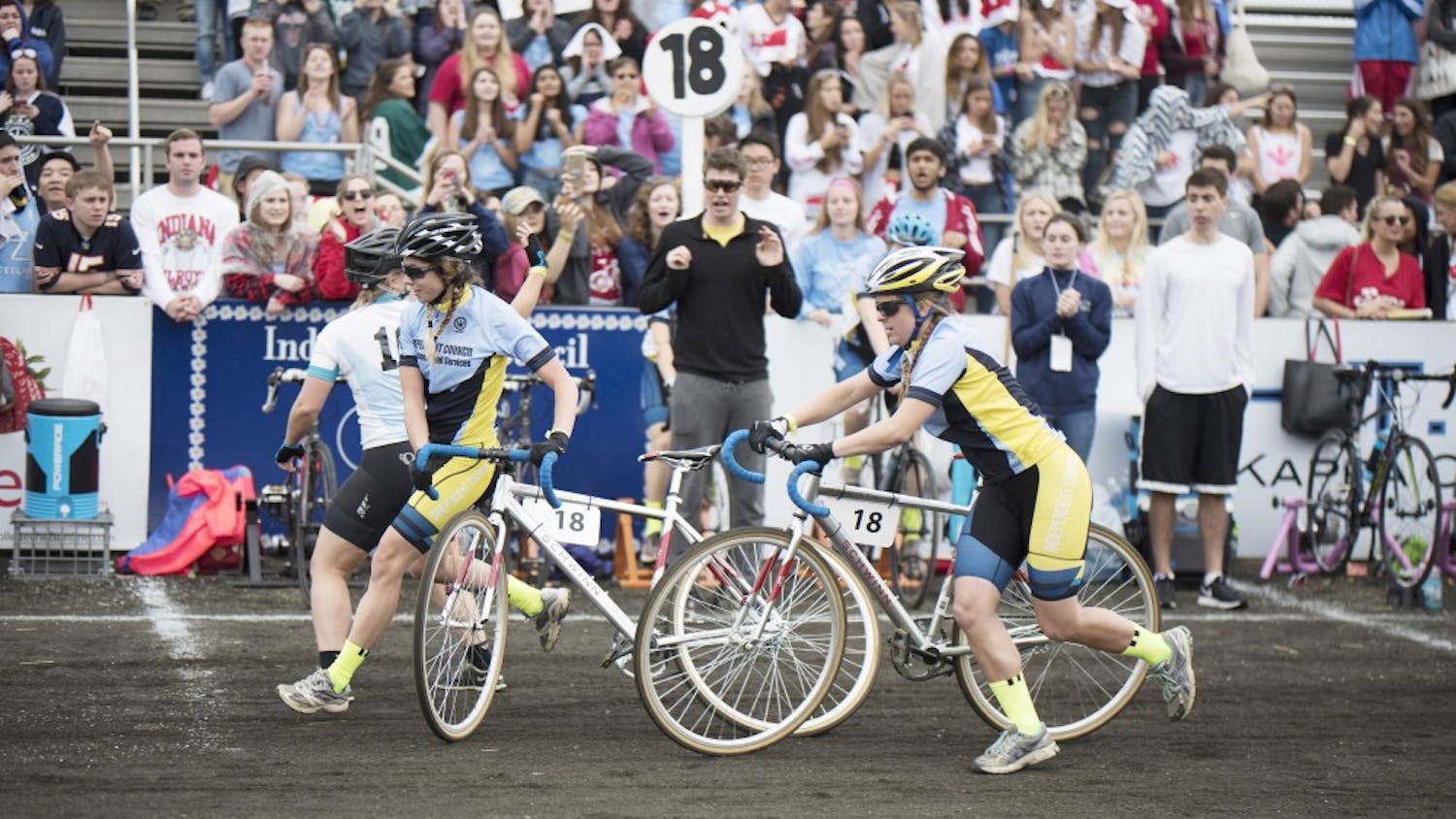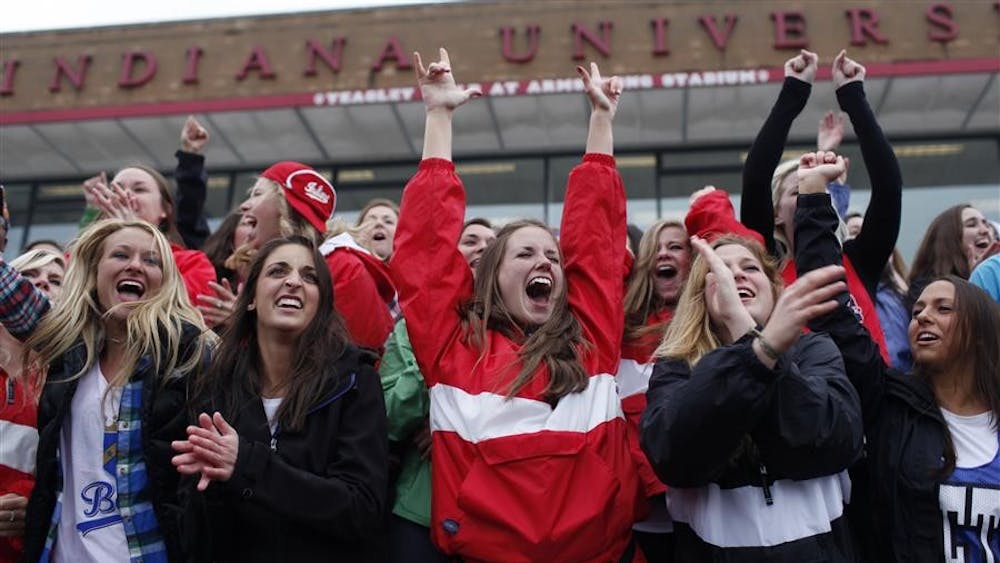Friday and Saturday, the spotlight will be on 66 teams as they race for the Little 500 men’s and women’s titles.
Months of training will come down to a span of more than one hour for the women and two hours for the men. One mistake can mean failure, and one right move can prove to be the championship decision.
But for teams to be in this position, it takes more than just an effective race
strategy.
Riders train from the start of the school year to prepare for the Little 500 and the potential successes that come with it.
“Fall is a good time to build the team, to bond with the rookies and build one’s base,” sophomore Alpha Epsilon Pi rider Sam Erlanger said. “We also do the Fall Series to get some experience on the track.”
During the fall season, riders typically train four to five hours each weekend. Mileage-wise, riders bike 30 to 40 miles on weekdays and anywhere from 45 to 100 miles each weekend.
Though bikers ride long distances in the fall, they usually remain at slow speeds, typically around 15 miles per hour.
This builds endurance, a key factor come race day. The biggest goal of fall training is to build a cardiovascular base for more intense workouts as the spring nears.
“The base becomes important later during the race because after doing a few 10 to 20 lap sets, you need that base to keep you going,” Erlanger said. “There is no time for base in the spring because all the time is spent on leg speed, power in the legs and track time.”
Once a cardiovascular foundation is built, riders can improve on speed. Throughout the winter, teams do more intense workouts indoors, typically through interval training.
When it’s feasible, teams will go on outdoor rides, but the main goal is to be as well-rounded as possible come race day.
By the time March and April roll around, bikers hope to be peaking, when their cardiovascular base and additional training combine to produce ideal physical conditions.
When riders take to the track, unforeseen circumstances will alter teams’ races — it is just a facet of the annual competition that makes it so unpredictable.
However, each team’s individual training will put it into contention for the BorgWarner Trophy.
“For contending in the race, learning how to ride in the pack and how to deal with surges all depends on your training,” Erlanger said. “There’s so much physical work to be put in. Without it, we would not be in contention at all.”
Year-long sport
Get stories like this in your inbox
Subscribe





